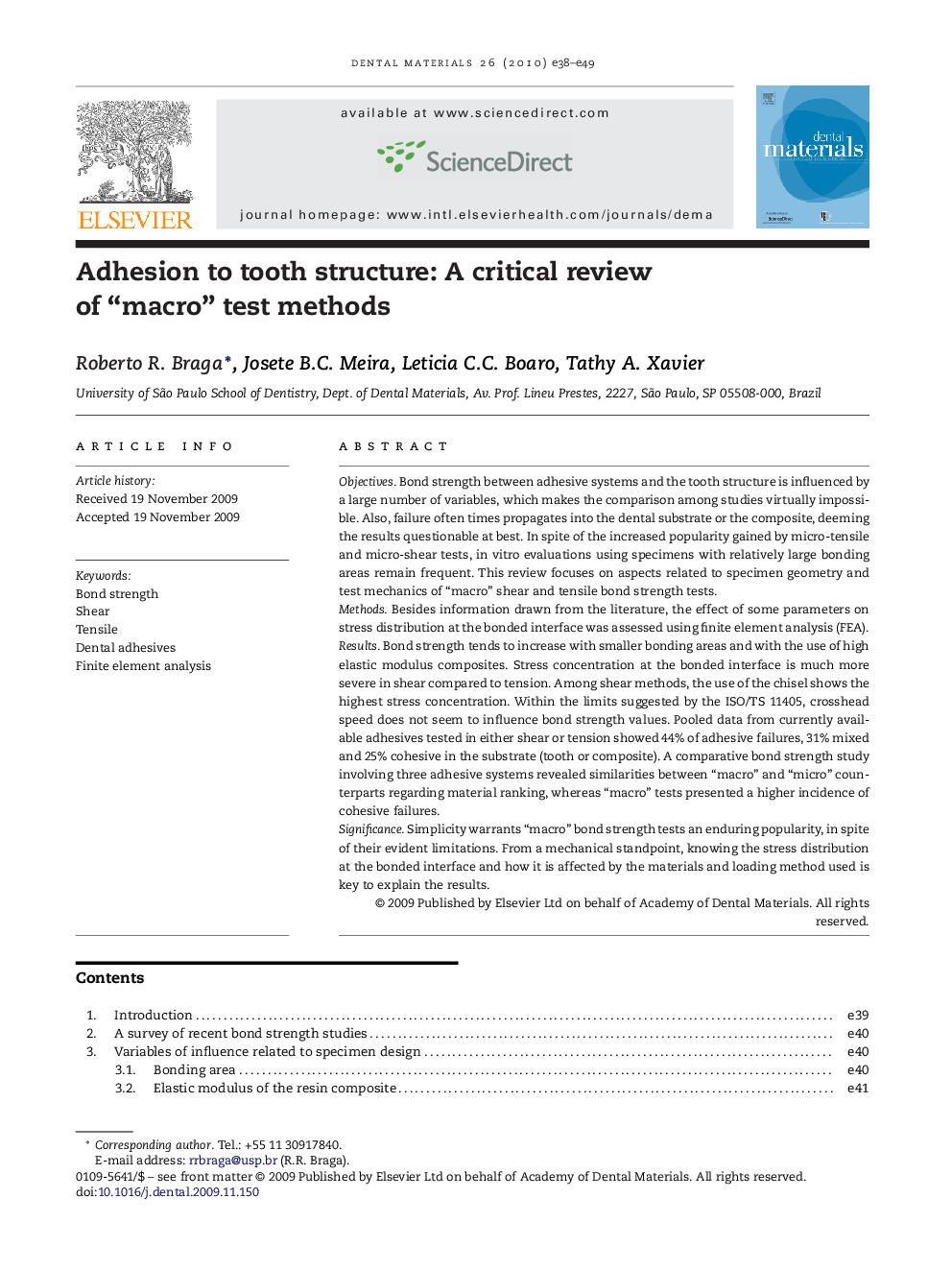| Article ID | Journal | Published Year | Pages | File Type |
|---|---|---|---|---|
| 1422794 | Dental Materials | 2010 | 12 Pages |
ObjectivesBond strength between adhesive systems and the tooth structure is influenced by a large number of variables, which makes the comparison among studies virtually impossible. Also, failure often times propagates into the dental substrate or the composite, deeming the results questionable at best. In spite of the increased popularity gained by micro-tensile and micro-shear tests, in vitro evaluations using specimens with relatively large bonding areas remain frequent. This review focuses on aspects related to specimen geometry and test mechanics of “macro” shear and tensile bond strength tests.MethodsBesides information drawn from the literature, the effect of some parameters on stress distribution at the bonded interface was assessed using finite element analysis (FEA).ResultsBond strength tends to increase with smaller bonding areas and with the use of high elastic modulus composites. Stress concentration at the bonded interface is much more severe in shear compared to tension. Among shear methods, the use of the chisel shows the highest stress concentration. Within the limits suggested by the ISO/TS 11405, crosshead speed does not seem to influence bond strength values. Pooled data from currently available adhesives tested in either shear or tension showed 44% of adhesive failures, 31% mixed and 25% cohesive in the substrate (tooth or composite). A comparative bond strength study involving three adhesive systems revealed similarities between “macro” and “micro” counterparts regarding material ranking, whereas “macro” tests presented a higher incidence of cohesive failures.SignificanceSimplicity warrants “macro” bond strength tests an enduring popularity, in spite of their evident limitations. From a mechanical standpoint, knowing the stress distribution at the bonded interface and how it is affected by the materials and loading method used is key to explain the results.
